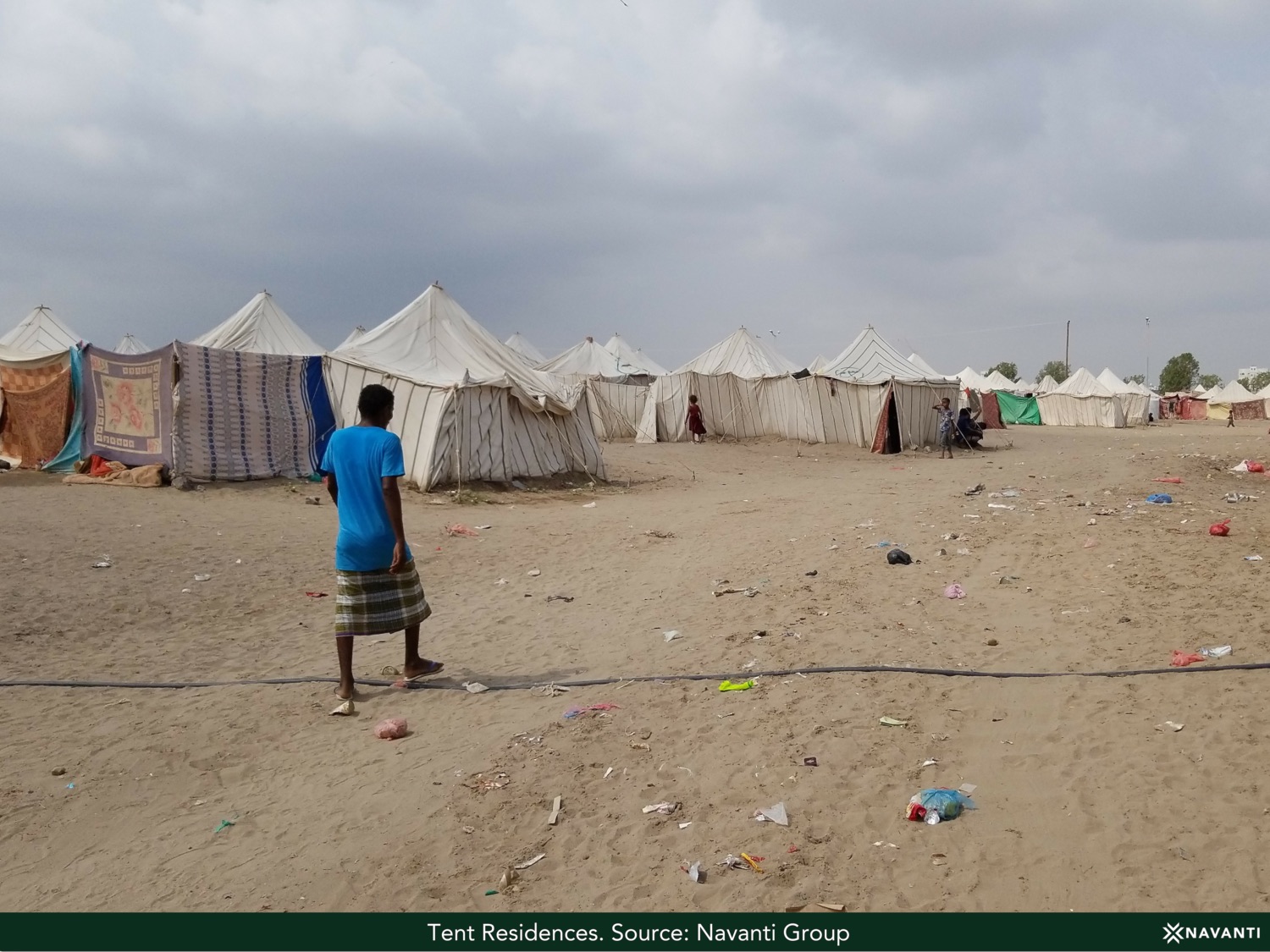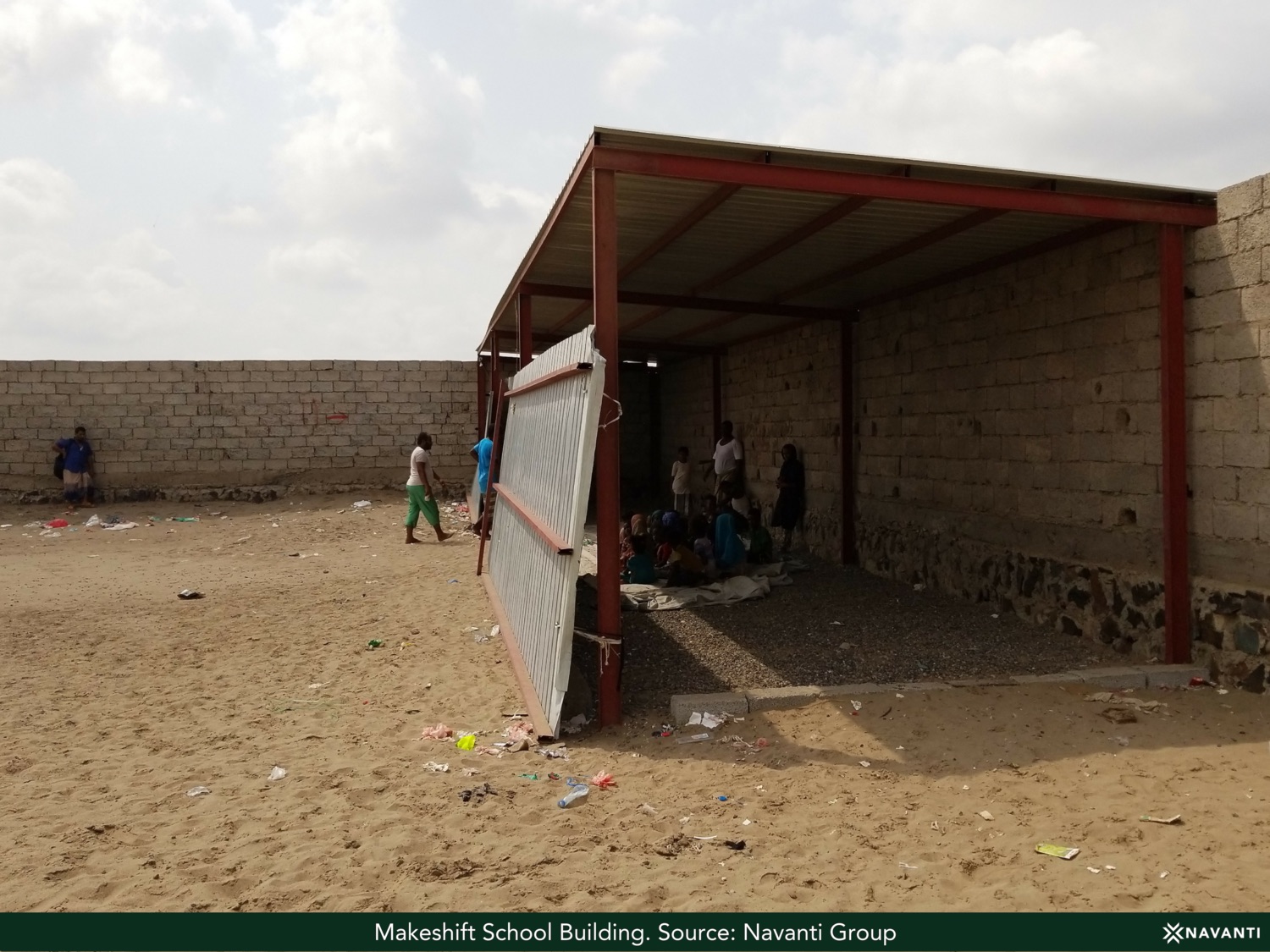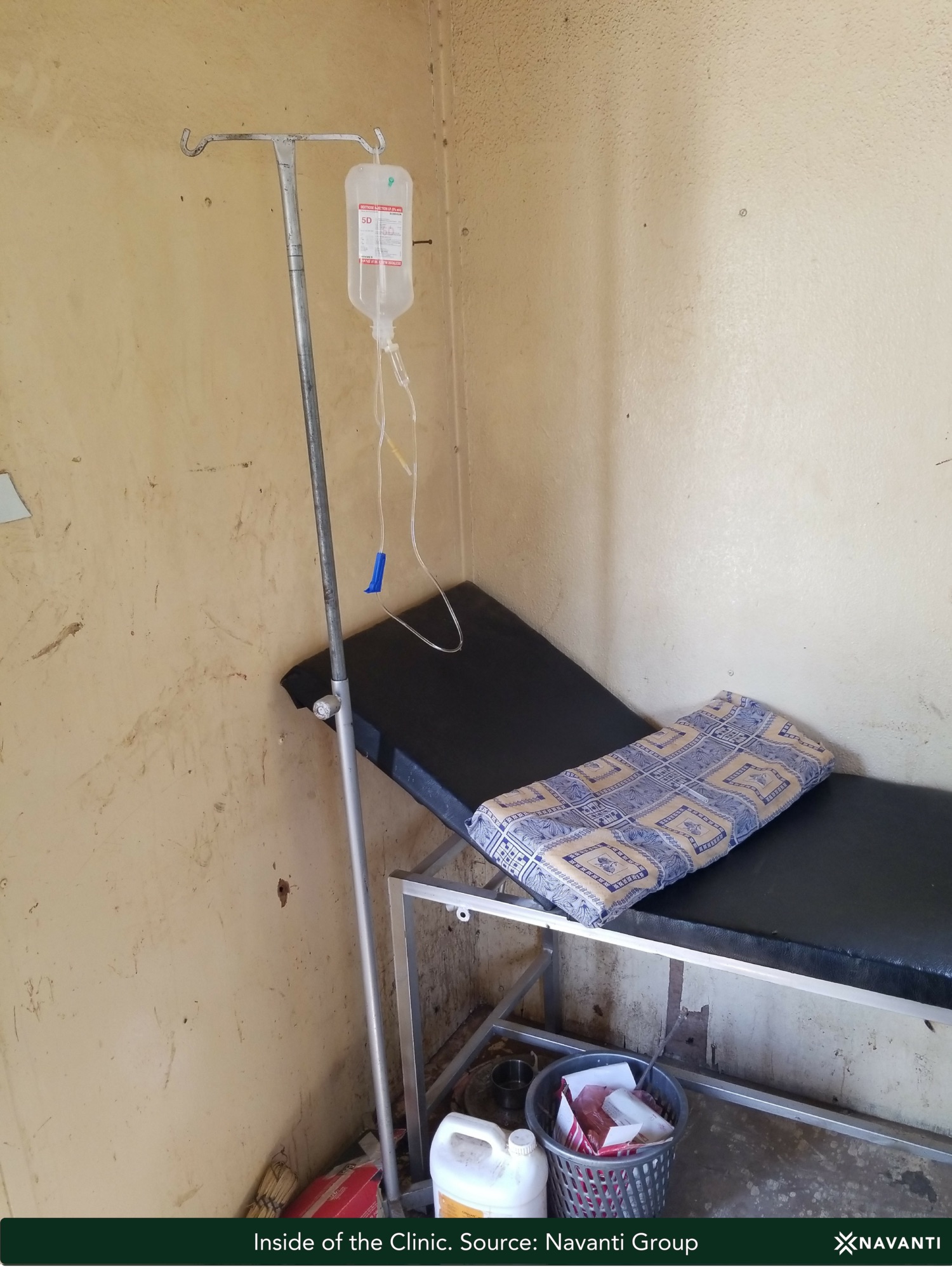Photo Essay: Fighting for Survival in Yemen’s al-Shawkani IDP Camp
Fighting in Yemen’s al-Hudayda city led to the displacement of hundreds of thousands of residents over the summer. Some settled in makeshift shelters in urban areas, while others headed for internally displaced persons (IDP) camps constructed by nongovernmental organizations (NGOs) or Republic of Yemen Government-affiliated institutions.
Navanti researchers visited one such camp, on the border of Aden and Lahij governorates, this summer to conduct research into living conditions. They found thousands of people subsisting in a primitive environment, with little to no help from outside entities and dwindling opportunities for work or education. Nevertheless, residents of the al-Shawkani camp, as it is known locally, persevere in the hopes of coming relief.

Panoramic view of al-Shawkani camp.
Broken Services and No Aid in Sight
The al-Shawkani camp is named after the charitable organization that provided the land the camp was built on, as well as most essential services at its opening, including tents, lunch meals, and bathrooms. But a dispute between the al-Shawkani organization and local authorities led to the former’s withdrawal from service provision in all but a few fields. As a result, residents have been left without functioning municipal services for months.

Trash disposal is nonexistent and people dump their waste on the edges of the camp.

Residents rely on solar panels for electricity because the camp lacks access to the electrical grid, as well as generators.
One makeshift school serves an estimated 1,200 children. Parents face numerous difficulties in sending their children to study outside the camp in government schools, chief among them securing the 150 Yemeni Rial ($.60) needed for transportation each way.

Administrators of government schools also put up bureaucratic obstacles to enrolling camp children in order to prevent strains on their local academic systems.

Health problems are rampant in the al-Shawkani camp. Navanti researchers report that the common sicknesses detailed in official records—including diabetes, heart disease, kidney failure, and psychological disorders—do not tell the full story.

Conditions not included on official records include widespread diarrhea and malnutrition among children, as well as asthma, intestinal parasites, and complications from previous surgeries.

“I couldn’t handle the severe heat during my four-hour visit to the camp–so how do you think the elderly and sick are doing after several months?”—Navanti researcher
Despite the al-Shawkani camp’s dire living conditions, some residents eke out a living in whatever ways they can manage.

Several have opened makeshift stores that sell toiletries and food, although the quantity of supplies is highly limited.


The camp even sports a market of sorts, where produce and fish are sold.

Despite miserable conditions, al-Shawkani residents fight for survival, hoping that humanitarian NGOs and local authorities will eventually provide them with the services they need to weather the ongoing conflict with dignity.


